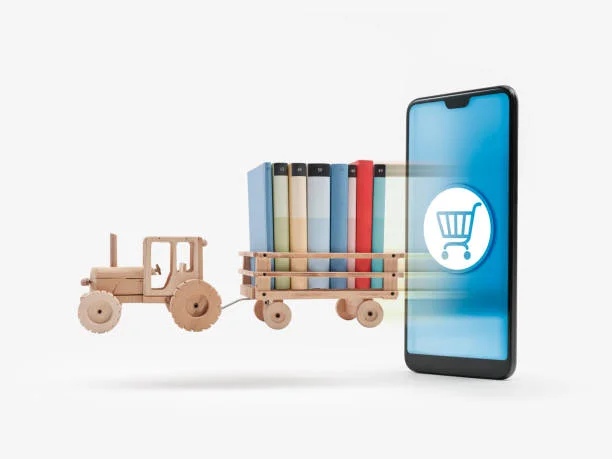For decades, catalogs have been a trusted marketing tool offering curated collections of products, beautiful visuals, and a tactile browsing experience that connected brands to their customers. You probably remember flipping through thick seasonal books from your favorite stores, circling items with a pen, folding down pages for later. It was slow, deliberate, and strangely satisfying.
But times have changed. So has the way we shop, explore, and interact with products. As consumers, we’re no longer sitting on the couch with a paper catalog and a landline. We’re scrolling on phones, jumping from social platforms to online shops, and making split-second decisions in a digital world that never stops. Naturally, catalogs had to evolve and they have, dramatically.
Today, the catalog is no longer bound to paper. It’s clickable, dynamic, and often more immersive than ever before. And for businesses, that transformation is more than just cosmetic. It’s strategic.
From Coffee Table to Mobile Screen
The shift from print to digital isn’t about chasing trends. It’s about following the customer. And the customer has gone mobile.
The average person spends hours each day on their smartphone. They discover brands on Instagram, click through targeted ads, and expect to see product information instantly. This reality leaves traditional catalogs at a disadvantage. While a printed catalog might be beautiful, it lacks interactivity, immediate accessibility, and the ability to evolve in real time. In contrast, a digital catalog can be updated, optimized, and distributed instantly meeting people wherever they are.
When a shopper can tap on a product, view a video, see color variations, or add something to cart with a click, their experience becomes seamless. The catalog is no longer just a source of inspiration it becomes the first step of the buying journey.
Bridging Storytelling and Sales
There’s something inherently powerful about a catalog. It’s more than just a product list. Done right, it tells a story. It communicates a brand’s identity, values, and vision. It can highlight seasonal trends, inspire new lifestyles, and guide customers through curated collections in a way that feels intentional and personal.
Digital catalogs don’t lose that storytelling power in fact, they enhance it. With the ability to embed video, animations, music, or interactive elements, the modern catalog becomes more than just a flipbook. It’s an experience. And because it lives online, it’s also trackable. Businesses can measure how long users stay on each page, which products they click on, and where they drop off. That kind of insight simply isn’t possible with print.
Right in the middle of this shift is a practical solution many brands are embracing: platforms that allow you to convert your printed catalog into a digital experience that retains its visual charm while gaining all the benefits of interactivity, analytics, and scalability. Services like Publitas help businesses make this leap without needing to build something from scratch offering tools to streamline the entire process from upload to distribution.
Redefining Reach and Cost
Print has its place, but it’s expensive. Designing, printing, shipping it adds up quickly. And once it’s in someone’s hands, there’s no way to update it or fix a typo. You have one shot to get it right. With digital, the game changes.
A digital catalog costs significantly less to produce and distribute. You can launch it globally without paying for postage. You can translate it for different regions, tailor it to various audiences, and personalize recommendations based on behavior. You can test different layouts, headlines, or featured products in real-time and then measure the impact.
That level of agility gives businesses, especially smaller or mid-size ones, a chance to compete in a fast-moving market. Instead of waiting for the next print cycle, they can respond instantly to trends, inventory changes, or new campaigns.
Environmental Consciousness Meets Innovation
There’s also the environmental factor to consider. As consumers become more eco-conscious, the demand for sustainable practices is only growing. Printing thousands of catalogs on glossy paper, only for many of them to be discarded unread, doesn’t align with the values of today’s buyer.
Digital catalogs present a cleaner, greener alternative. They offer the same level of design and storytelling arguably even more but without the waste. For businesses that want to highlight their commitment to sustainability, this transition is both logical and beneficial.
It’s also part of a broader digital transformation that touches every aspect of how companies operate from supply chains to customer service. The digital catalog is just one piece of that puzzle, but an important one. It’s a public-facing asset that reflects your brand’s forward-thinking approach.
A Tool for the Entire Customer Journey
What’s especially exciting about digital catalogs is how they now function as more than just marketing brochures. They’re becoming integral parts of the customer journey.
Imagine a potential buyer discovering your brand through a social ad. They click through and land on a beautifully designed, responsive catalog. Instead of a jarring jump to a standard e-commerce page, they’re greeted with a curated, magazine-like experience. They can flip through collections, watch short videos, tap on products to see them in action, and check out directly. That kind of flow makes the shopping experience feel natural, guided, and intuitive.
And this is where the digital catalog goes beyond marketing it becomes a sales tool, a brand storytelling device, and a conversion driver, all in one.
Where We’re Headed Next
The rise of digital catalogs isn’t a fluke. It’s a response to how people live, shop, and connect in 2025. Businesses of all sizes from indie makers to global retailers are embracing the change not just for efficiency, but for the opportunity it creates to do more with less.
We’re likely to see even more innovation ahead. Augmented reality integrations. Hyper-personalized recommendations based on browsing behavior. Catalogs that adapt in real time to different user segments. All of it points to one thing: catalogs are no longer static documents they’re evolving platforms for commerce and creativity.
So whether you’re a seasoned retailer or a growing brand trying to reach new audiences, it’s time to look at your catalog not as a legacy piece, but as a digital asset with unlimited potential. The paper era may have its nostalgia, but the future of catalogs is firmly online and it’s just getting started.
Explore related articles to deepen your understanding before you go.







